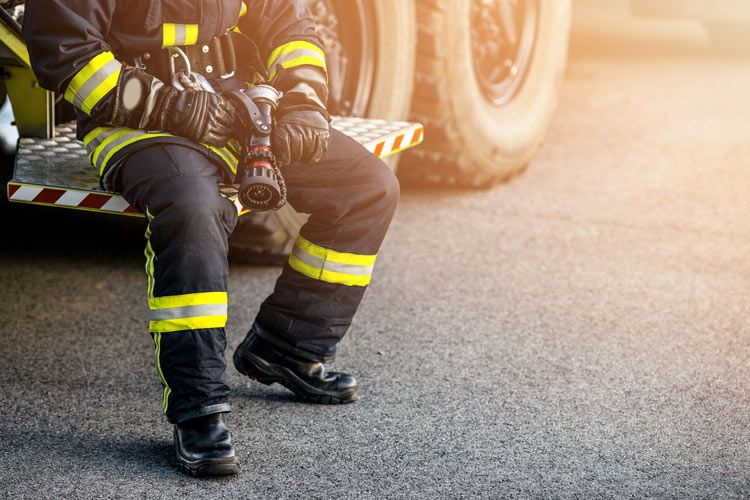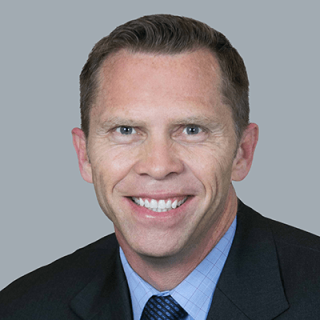Blog
Five Property Insurance Warning Signs and What to Do About Them
Replacement value is the main factor to consider when determining property program limits. The Construction, Occupancy, Protection, and Exposure (COPE) features of the building also impact the cost, availability, and terms of property insurance. In this article, we examine five site conditions that have the biggest impact on the risk quality and what can be done to mitigate their impact.

Lack of Automatic Fire Sprinklers
A lack of adequate automatic fire sprinklers is the most significant driver of increased property insurance costs. Automatic fire sprinklers dramatically reduce the dollar loss caused by heat, smoke, and water compared with fire detection and manual firefighting response.
Although there is generally no substitute for automatic fire sprinklers, insured companies can help mitigate the impact of not having sprinklers by emphasizing the positive steps they have taken to reduce fire risk. These steps could include automatic fire detection that is in place and monitored 24/7, non-combustible construction and contents, adequate fire extinguishers, a surveillance service, or 24-hour occupancy.
Special Hazards
Most commercial buildings have “common hazards,” such as storage rooms, heaters, and maintenance shops. Some industries also have “special hazards,” which get additional scrutiny or may be avoided entirely by some insurance carriers.
Examples of special hazards include the following:
- High-piled plastic storage
- Flammable or combustible liquids, combustible dust, flammable gases, or pyrophoric gases
- Hydraulic equipment
- Plastic working
- Ammonia refrigeration
- Heated processes
- Fuel storage and dispensing
- Molten metals
- Organic peroxides, explosives, oxidizers, nitrocellulose, or unstable/reactive materials
If your operation includes one or more of these special hazard(s), your submission will receive extra scrutiny. Be prepared to describe the preventive measures you’re taking, such as eliminating ignition sources. And share your control measures, such as fire suppression specifically designed for the hazard, including detached buildings and damage-limiting construction.
Higher Hazard Occupancies
By their very nature, some industries involve the special hazards we have described. These industries include food and beverage, forest products, chemical risks, and wafer fabrication.
If you are in one of these industries, you can help lower the impact on your property insurance by anticipating what could go wrong and taking steps to prevent accidents. In other words, explain to your carrier(s) why those risks don’t exist at your facility or how you are mitigating them.
Natural Hazards
When it comes to perils, natural catastrophes have the broadest impact on the insurance marketplace. Earthquakes, hurricanes, and floods have always been major concerns when it comes to property insurance. Additionally, in recent years, properties prone to wildfire and convective storm (hail, tornado, and lightning) damage are seeing reduced coverage or increased scrutiny.
If your operation is in the western US (particularly locations within a half mile of forest/woodland or within 200 feet of brush/grassland), be prepared to describe the mitigations you have put into place, including construction features, protection of openings, defensible space, and management of yard storage. Check out this post for specific preventive measures.
The most hail-prone locations are in Texas, Oklahoma, Kansas, Nebraska, western Iowa, western Missouri, eastern Wyoming, eastern New Mexico, eastern and central Colorado, South Dakota, southern North Dakota, southeast Montana, southwest Minnesota, and northwest Arkansas. Describe the age and hail rating of the roof cover, roof-mounted and ground-mounted equipment, skylights, and any equipment protected with hail guards.
If your business is in an area prone to natural hazards, it’s a good idea to have a detailed emergency action plan with respect to each specific natural hazard.
Combustible Construction
Wood frame buildings are the most obvious higher-risk construction class. Plastic-based materials are also closely examined by property insurance carriers.
Be ready to describe the fire, wind, and hail ratings of the following materials:
- Insulated metal panels (aka IMPS or sandwich panels)
- Exterior insulation finishing system (EIFS)
- Fabric structures (also known as soft structures)
In addition to these five site conditions listed above, which are the most common, here are some other factors that could potentially impact your property insurance.
- Specialized, mission-critical, long-lead-time equipment
- Specially controlled environments or rooms
- Single points of failure, such as utilities or pollution control systems
If any of these factors exist in your business, be ready to describe contingencies, preventive maintenance, safety stocks, spare parts, and other safety measures you have in place.
Lastly, your “human element” programs must be in good order. The following essential programs require employee training and oversight. Insurance carriers consider them to offer high benefit with minimal cost.
- Fire-system maintenance, including inspections, testing, and impairment management
- Hot-work and welding precautions, including work performed by contractors
- Building preventive maintenance, especially the roof
- Electrical system maintenance
If you have questions about property insurance and how you can lower your risk, reach out to your Woodruff Sawyer representative.
Author
Table of Contents














